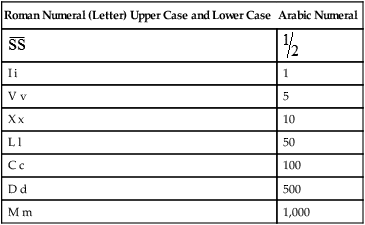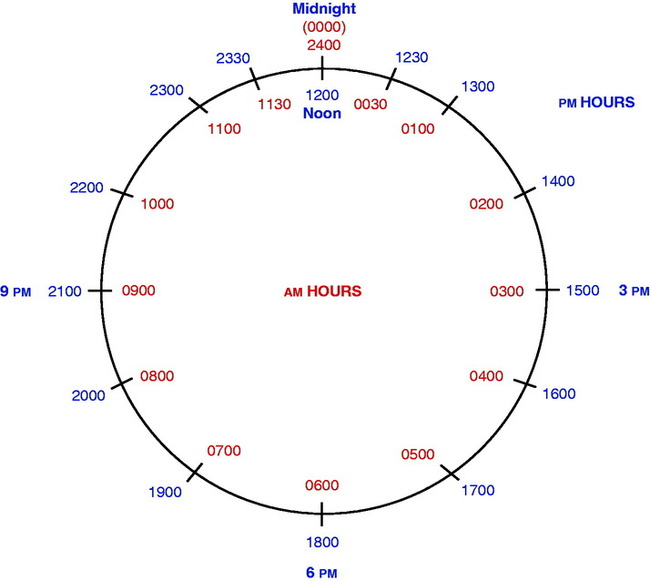Upon completion of this chapter, the learner will be able to: 1. Define the key terms that relate to Roman numerals and military time. 2. Demonstrate how to convert Arabic numerals into Roman numerals with 100% accuracy. 3. Convert times from a 12-hour clock to a 24-hour clock, and vice versa, with 100% accuracy. 4. Demonstrate proper strategies for rounding numbers. 5. Compute problems that ask for rounding of numbers with 100% accuracy. 6. Apply functional knowledge of a scientific calculator to solve problems with 100% accuracy. This chapter discusses topics that I like to refer to as the idiosyncrasies of health care math. In the health care careers, we encounter: Roman numerals are letters, commonly written with upper-case letters but occasionally written with lower-case letters, to represent a specific number. As the letters are put together, a different number is created (Table 2-1). The use of Roman numerals as a numbering system is as old as the concept of medicine. Table 2-1 Roman Numerals Compared with Arabic Numerals Data from Mulholland JM: The nurse, the math, the meds: Drug calculations using dimensional analysis, St. Louis, 2007, Mosby, and Fulcher RM, Fulcher EM: Math calculations for pharmacy technicians: A worktext, St. Louis, 2007, Saunders. As stated before, military time is expressed by converting a 12-hour clock to a clock that counts 24 hours. The conversion begins when the time hits 1:00 p.m., which is referred to as 1300 hours. As you can see from Figure 2-1, each hour is counted from 1300 to 2359. Midnight (12 a.m.) can be documented in two different formats: 2400 or 0000. Your facility’s policy will state which format you should use to document midnight. Why do health care facilities use military time in their documentation? Most health care facilities operate 24 hours a day, 7 days a week, and 365 days a year (Box 2-1). The use of military time reduces documentation errors, medication errors, and treatment errors. Facilities have used a 24-hour clock to differentiate when an order has been written for a.m. or p.m. administration. Many facilities are not open 24 hours a day but are open 12 to 15 hours a day (Box 2-2). Military time is used to identify when a patient has been seen, has been treated, or has had medication dispensed or when follow-up phone calls are made.
Roman Numerals and Military Time
Objective 2
Review of roman numerals
Roman Numeral (Letter) Upper Case and Lower Case
Arabic Numeral


I i
1
V v
5
X x
10
L l
50
C c
100
D d
500
M m
1,000

Objective 3
Military time
Examples:
1:00 a.m.
0100
2:15 a.m.
0215
3:30 a.m.
0330
Examples:
10:15 a.m.
1015
11:45 a.m.
1145
12:20 p.m.
1220
Examples:
2:15 p.m.
1415
3:30 p.m.
1530
7:30 p.m.
1930
11:58 p.m.
2358
Use of Military Time in Health Care
Roman Numerals and Military Time
Get Clinical Tree app for offline access














